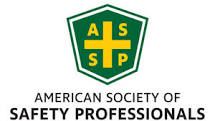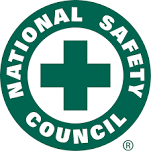More Than a Fine: How the Top 3 OSHA Violations Point to Deeper Contractor Risk
A single OSHA citation can feel like a painful, unexpected cost. But what if that fine is actually just the tip of the iceberg?
The reality is that the most common OSHA violations are often symptoms of a much deeper, more expensive problem: a critical gap in how you manage your contractors. These citations don’t happen in a vacuum. They are frequently the result of an outdated, manual approach to contractor management that leaves you blind to the real risks on your job sites. When you lack centralized oversight of your contractors' safety training and compliance, you’re not just risking a fine; you're risking project delays, legal battles, and catastrophic failures.
Let’s dive into the top violations and uncover how they connect directly to contractor oversight.
1. Fall Protection (29 CFR 1926.501)
It’s no surprise that fall protection is consistently at the top of OSHA’s list. Falls are a leading cause of workplace fatalities, especially in high-risk industries like construction. The standard is clear: any employee working at an elevated height must be protected.
- The Contractor Gap: You hire a roofing company or a specialized maintenance crew to work on elevated equipment. You assume they are following protocol. But do you have documented proof that every single one of their workers has up-to-date fall protection training? When an incident occurs, "we assumed they were trained" is not a defense. Without a centralized system to verify individual worker training records, you are exposed.
2. Hazard Communication (29 CFR 1910.1200)
The Hazard Communication Standard (HCS) ensures that workers have access to information about the chemicals they handle through Safety Data Sheets (SDS), proper labeling, and training. It’s about the fundamental "right to know."
- The Contractor Gap: A subcontractor brings a new chemical onto your site. Your own employees might be working nearby, but your team has no visibility into that chemical's SDS or whether the contractor’s employees are trained to handle it safely. This failure to properly label chemicals and train workers is a frequent violation that increases the risk of spills and injuries. This is a classic example of risk being managed in decentralized silos, while liability remains consolidated with you, the hiring organization.
3. Ladders (29 CFR 1926.1053)
Violations involving ladders are consistently one of the most cited by OSHA. The standard covers everything from the structural integrity of the ladder itself to how it is used on the job.
- The Contractor Gap: Your contractor’s team may have been "trained" on ladder safety, but are they using the right type of ladder for the job? Is it free from damage? Is it positioned at the correct angle and secured? A simple check-the-box training certificate from months ago doesn't guarantee safe practices today. Without a system to ensure and document site-specific training and ongoing competency, you are accepting a huge liability every time a contractor sets up a ladder on your property.
The Real Root Cause: A Disconnected Approach to Contractor Compliance
The common thread running through these violations is a lack of unified oversight. Many organizations still rely on a patchwork of emails, phone calls, and spreadsheets to manage contractor compliance. These manual systems are not just inefficient; they are a primary source of organizational risk. Key documents are misfiled, renewal dates for certificates of insurance (COIs) are missed, and there is no single source to confirm a contractor’s status. This forces companies into a reactive compliance cycle: an incident occurs, a new policy is hastily implemented to "check the box," and the issue fades until the next failure.
The True Cost: Beyond the OSHA Fine
An OSHA penalty is only the beginning. The indirect costs of a contractor-related incident are often far greater and include:
- Crippling Project Delays: A single stop-work order or the discovery of an uninsured contractor mid-project can derail timelines and budgets.
- Soaring Insurance Premiums: A poor safety record and a history of claims lead directly to higher insurance costs.
- Severe Legal Liability: In the event of a serious incident, companies can face "nuclear" jury verdicts reaching tens of millions of dollars, especially if they are found liable for negligent hiring.
- Lasting Reputational Damage: A catastrophic failure can make it significantly harder to win future projects and maintain client trust.
The Solution: From Reactive Chaos to Proactive Control with FIRST, VERIFY
Transforming compliance from a costly burden into a strategic advantage requires a fundamental shift in mindset and technology. The first and most critical step is to centralize and digitize your contractor management process.
This is where FIRST, VERIFY provides the solution.
Instead of drowning in spreadsheets and email chains, FIRST, VERIFY gives you a single point of administration for all contractor data, safety records, insurance documents, and training certifications. Our platform automates the administrative busywork of chasing paperwork and tracking expirations, freeing up your team to focus on high-value risk mitigation.
Most important, FIRST, VERIFY bridges the dangerous gap between a contractor’s paper promises and their real-world performance. We help you implement a formal contractor prequalification process, ensuring every worker on your site is properly trained, fully insured, and ready to perform their job safely—before they ever step foot on the property.
Don’t wait for an OSHA inspection to reveal your blind spots. Take control of your contractor risk today.
You might also like






